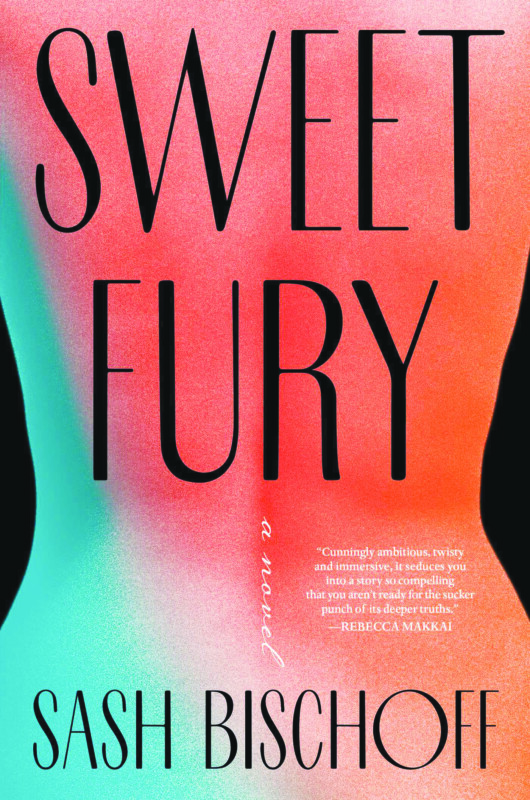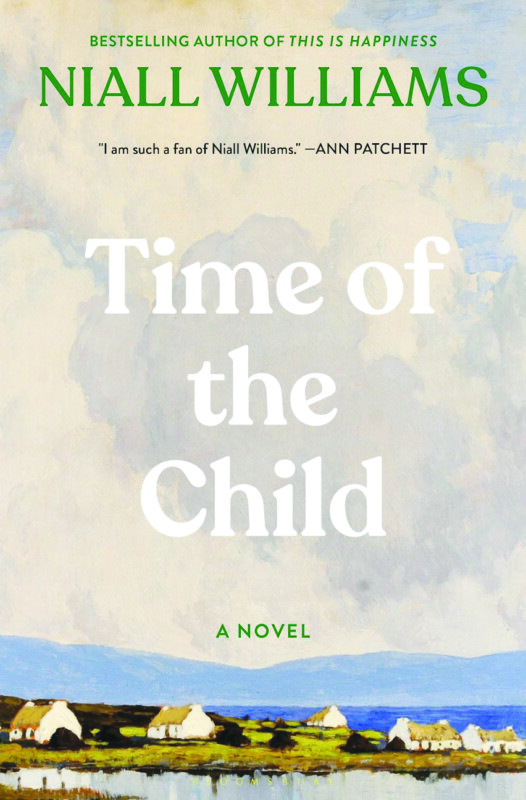Sweet Fury, by Sash Bischoff (Simon & Schuster, 288 pages)
Check any list of the greatest American novelists and F. Scott Fitzgerald is likely in the top 10. Few of us escape high school without reading The Great Gatsby, but not all of us go on to read Fitzgerald’s next novel, Tender is the Night, published in 1934.
That puts Tender-illiterates like me at a bit of a disadvantage going into Sweet Fury, a debut novel by Sash Bischoff that revolves around a modern, feminist interpretation of Tender.
The disadvantage is not prohibitive — you can still follow the storyline, and might even emerge with a desire to visit (or revisit) all things Fitzgerald. But a fear of missing out might hang over your reading, since Bischoff admits she embedded Easter eggs — inside jokes or references — nodding to Fitzgerald and his work throughout the book.
The story begins with the clinical notes of a psychiatrist, Jonah Gabriel, who has agreed to take on a new client, a Hollywood star named Lila Crane who is about to play the role of Nicole Diver in a modern adaptation of Tender is the Night, directed by her lover. The star and the therapist have an immediate rapport once they discover that they both went to Princeton and were both fans of Fitzgerald.
Crane had decided to see therapy because of trauma she suffered in childhood. Her father was abusive and had an alcohol addiction, and he was driving drunk, with Crane and her mother in the car, when they collided with another car, killing the father.
“I want your honest opinion,” she says to Gabriel in their first session. “If someone has done something terrible to you, can you ever truly heal? Or will you always have a scar? Is there a way to erase the scar itself — and more importantly, erase that person’s power to hurt you again?”
Since Tender also involves alcohol abuse and a car wreck, Crane believes she might benefit from working out her own issues, which also, it turns out, include a past sexual assault. She enters therapy just as she becomes engaged to the man she’s living with, an A-list director named Kurt Royall, who is a powerful, attention-seeking man 18 years her senior. Her mother, not surprisingly, has concerns, even if Lila does not.
The story swivels back and forth between the therapist’s notes, Crane’s journaling and what is happening in real time as production begins on this new, empowering version of Tender. Crane is excited about the production because, as she tells Gabriel, “Our version of Tender isn’t another tragedy of the tortured white man. It’s a feminist story of healing, of reparations.”
From the first page, we’re swimming in a story within a story within a story — Tender is about a psychiatrist who falls in love with a patient, and much of that book derived from Fitzgerald’s relationship with his wife, Zelda, who had mental health issues that required psychiatric care.
But if you haven’t read the Fitzgerald novel, don’t go down the CliffsNotes rabbit hole like I did, as it will just leave your head spinning. Better to just read Sweet Fury on its own merits. That is, if you can get past the title and cover art — a silhouette of a nude woman’s body — that makes the book look like some sort of cringe bodice-ripper. (Honestly, if I’d been reading on public transportation, I would have hidden the cover, and I’m not sure if that makes me a prude or a literary snob.)
The publicity for Sweet Fury promises Gone Girl-like pivots and twists, and after a slow start these come fast and furious, making it difficult to talk about the last half of the book without significant spoilers. Let’s just say that more than one character is not the person they are set up to be; in fact, hardly anybody is.
Bischoff knows how to turn a phrase — my mind keeps returning to her description of an opulent wrap-around porch stretching into a “single, satisfied grin.” And she does an excellent job concealing the twists until their reveal; the story is well plotted and foreshadowing is light. She unpacks everything with sufficient depth at the story’s end.
If there’s a fault in these stars, it’s that Bischoff does not adequately convince us to love any of them as the story unfolds.
I never felt an emotional attachment to Lila, her mother, the scriptwriter, the therapist, the gay best friend or any of the myriad other characters. I read Sweet Fury as one watches the second season of a TV show you’ve never seen before, with clinical detachment. This is, no doubt, partly because I knew little about the book that was incessantly being referenced (even a cat is named Zelda — everything is Fitzgeraldized) but it’s also partly because, as I found out at the story’s end, much of what I thought I knew about these people wasn’t true. And you can’t love characters if you don’t know them.
That said, will I re-read it now to connect the dots I missed the first time? Yes, of course — somewhat grudgingly. And if I’d loved Lila Crane like I want to love protagonists, I’d probably read Tender is the Night, too. But at this point, that’s more time and energy than I want to invest in this particular fictional actress. At least until the movie comes out. B- —Jennifer Graham
Featured Image: Sweet Fury, by Sash Bischoff






